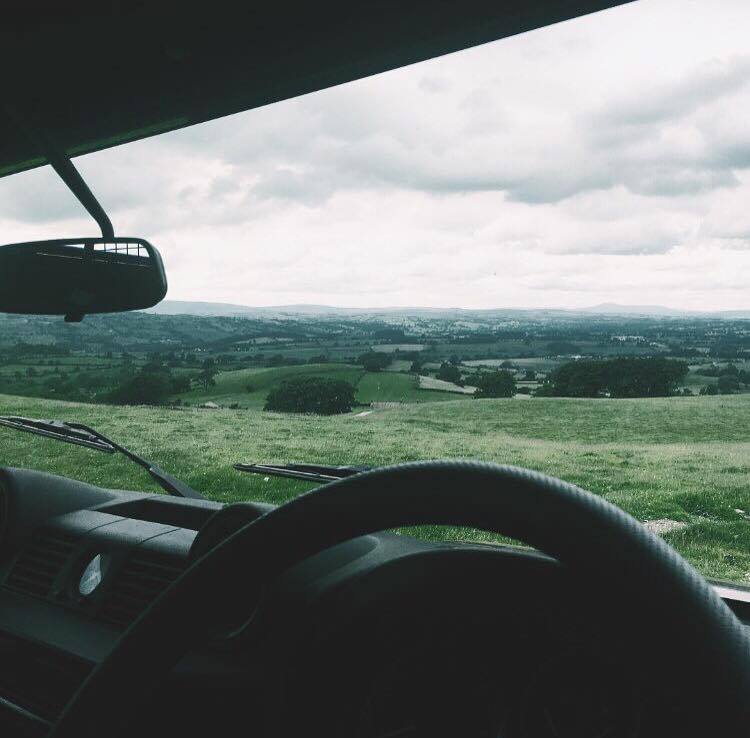The alarm went off.
It is 5:00AM. Despite the strong urge to hit the snooze button, I dragged myself out of bed and shoved on as many clothes as possible.
Why?
Because it is time to go scanning.
Now, I am presuming most of you reading this will not be from a farming background and so may not know what I mean by ‘scanning’.
Scanning is when sheep undergo a pregnancy ultrasound; the process does not hurt the sheep and allows farmers to determine how many lambs each sheep will have, making management of stock simpler and more efficient.
As scanning often takes places 10-15 weeks after the tup (male sheep) has been introduced to the flock, it usually happens around Jan/Feb time. Hence the need for layers!

- Frosty morning view from the Landrover Defender
My job for the morning was fairly straight forward: keep the sheep coming!
This involved running around the sheep and shooing them up the race; imagine me flapping my arms like a chicken to generate enough movement and noise to get them to move.
Whilst it was quite a repetitive task, it kept me warm, something my toes, which were starting to feel the frost, were glad about.
All the sheep we gathered for the occasion were scanned within three hours and had fairly successful results; most would be having twins or triplets.
Collectively their wool was an array of colours, with each marking representing when they are likely to lamb (green = early as that is the colour of the teaser tup) and how many lambs they will be having.

Next we dosed all the sheep, sorted them into the correct colour groups and herded them back into the fields, all in time for breakfast.
Yet we still have more sheep to scan, and I have a feeling lambing time is going to be a very busy time indeed!


